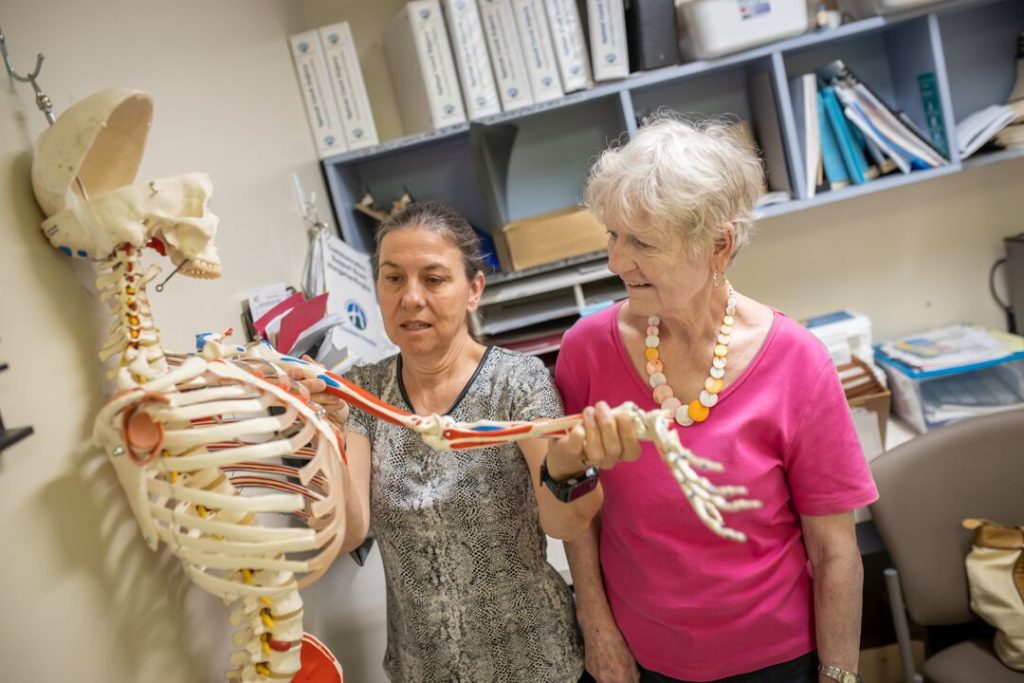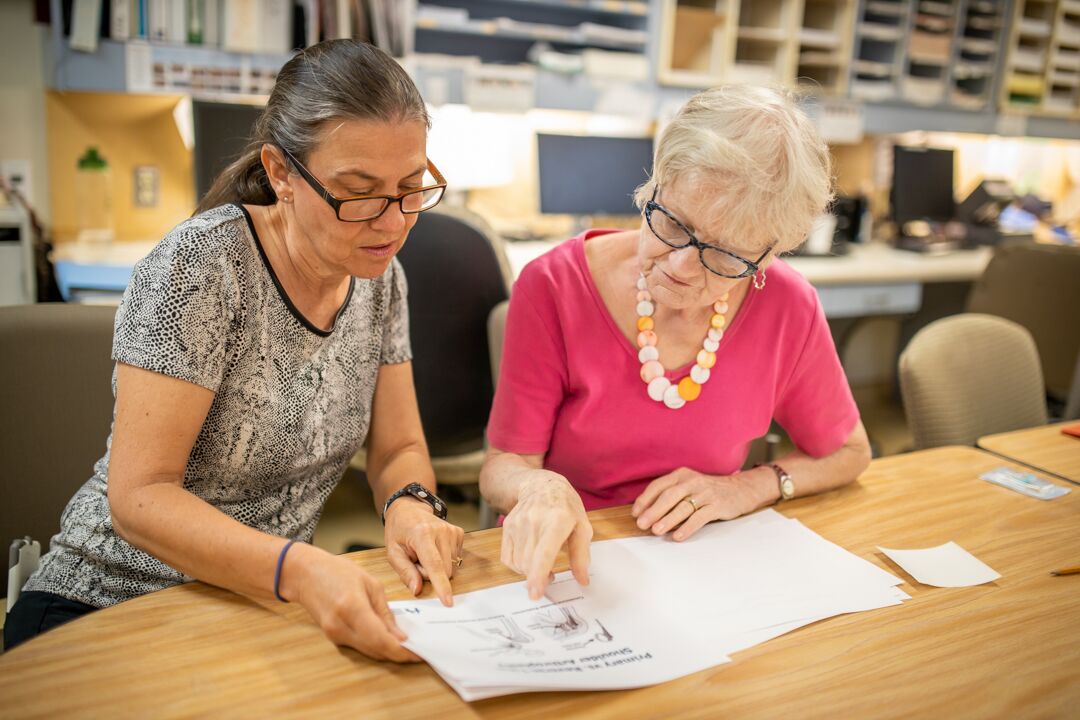
New program makes shoulder surgery more seamless
Staff in orthopedic surgery at Hamilton General Hospital are helping patients better prepare for surgery with a new educational program. It provides teaching and support for people undergoing shoulder joint replacement surgery. The goal is to equip them with knowledge and tools so they can prepare for discharge and recover at home smoothly.
Time to plan ahead
“This is an elective surgery, so we have an opportunity to help these people plan,” says Esther McEvoy, an occupational therapist in orthopedic surgery who was involved in the program’s development. “Before the program, we weren’t taking advantage of this opportunity.”
After shoulder joint replacement surgery, the affected arm can’t bear weight and will have limited mobility. Most patients have to make arrangements for extra support when they return home, especially if they use a mobility device, like a walker. If patients don’t have these supports in place when they are ready to be discharged home, they end up spending extra days in the hospital while they make arrangements. A few more days in the hospital may not seem significant, but if this happens to everyone, it adds up over time.
“Small delays can add up, and that reduces the number of people we can treat each year. The hospital is also not the best place to recover since there is a higher likelihood of getting an infection while in hospital,” says Jessica Pilon-Bignell, orthopedic navigator. “By preparing people ahead of time, we are reducing delays, improving outcomes and increasing our capacity overall.”
participants went home an average of 0.5 to 1 day earlier than their counterparts
Though the program is still in early days, the numbers are looking promising. Depending on the type of surgery, program participants went home an average of 0.5 to 1 day earlier than their counterparts who didn’t.
Setting clear expectations about recovery
The program was modeled after similar education provided to knee and hip replacement patients. Patients attend an information session to learn about the surgery, what to expect afterward, and how to prepare for their recovery. They are asked to complete a planning checklist to ensure they are ready for surgery with prompts like:
• I have all the equipment I may need at home such as an A-frame walker and bath aids
• I have made plans for respite
• I have made arrangements for help with meals

Getting people to think about how they will manage during recovery not only reminds them to make arrangements, but makes them more mentally prepared for surgery.
“The more you see and learn, the more relaxed you are when it’s time for surgery,” says Sandra Gmell, who was part of the program this spring.
Attendees plan ahead
Esther says she notices a difference in patients who attend the sessions.
“I can tell when people have gone to the education session because they have done some pre-planning.”
The program is also connected to the YMCA so patients can easily access rehabilitative fitness programs after their surgery. The wraparound approach is intended to improve recovery so people can make the most of their new joint.
Esther and Jessica agree that the program is helping smooth the discharge process. They hope to expand it to even more surgeries in the future.
